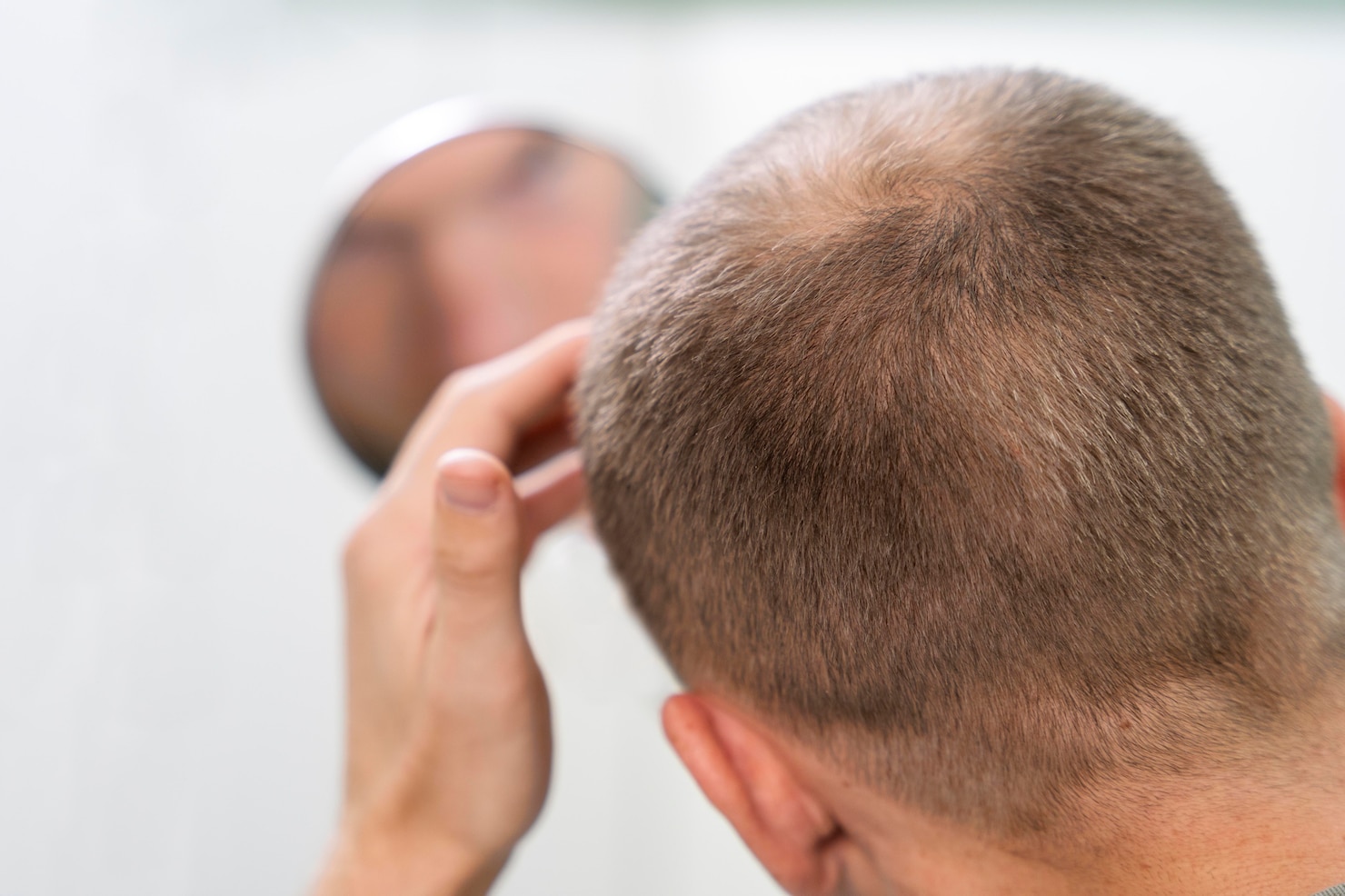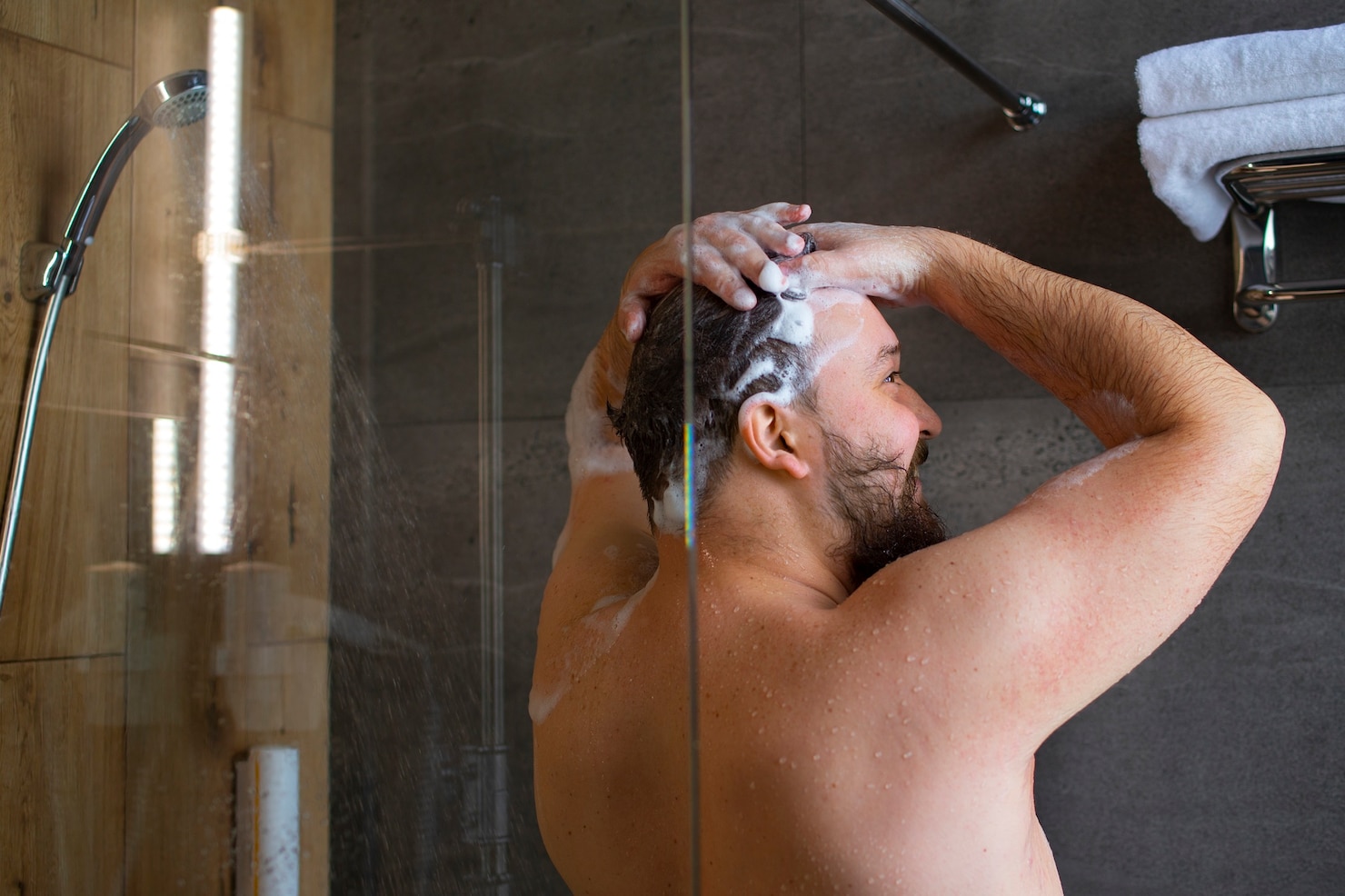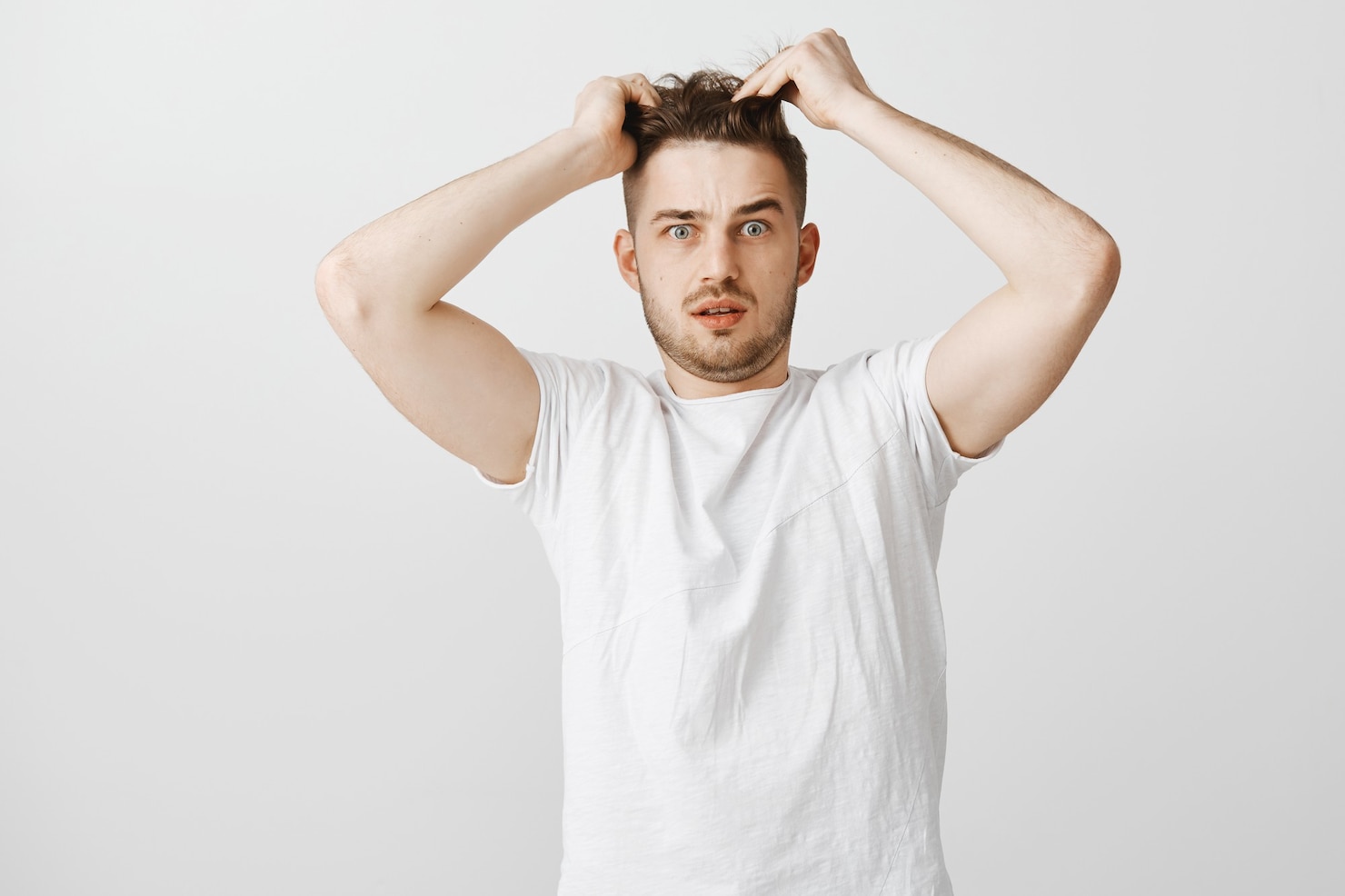
Hair loss can be a distressing experience for many men, impacting their self-esteem and confidence. Understanding the various types of alopecia, their causes, and effective hair care strategies is crucial for managing and addressing this common concern. In this comprehensive guide, we will delve into the world of alopecia, shedding light on its different forms and providing scientific insights to help you make informed decisions.
From androgenetic alopecia to alopecia areata, we will explore the causes, risk factors, and prevalence of each type so you no longer need to manually scour the internet with searches of “alopecia types,” “what does scarring alopecia look like,” or “can you die from alopecia?”
Get ready to empower yourself with scientific knowledge and practical insights to navigate the world of alopecia and optimize your hair care routine.
Main Types of Alopecia
When it comes to alopecia, it is essential to familiarize yourself with the main types that commonly affect men. Understanding the characteristics and distinctions of these types will help you navigate the realm of hair loss more effectively. In this section, we will delve into two significant types of alopecia: androgenetic alopecia and alopecia areata.
Androgenetic Alopecia
Androgenetic alopecia, commonly known as male-pattern baldness, is the most prevalent form of alopecia in men. This type of hair loss is influenced primarily by genetic and hormonal factors, specifically the hormone dihydrotestosterone (DHT). Androgenetic alopecia typically begins with the gradual thinning of hair on the crown and temples, eventually leading to a receding hairline and, in some cases, complete baldness. The process is often progressive and may follow a predictable pattern.
Alopecia Areata
Alopecia areata is an autoimmune condition that causes sudden and unpredictable hair loss. It manifests as round or oval patches of baldness on the scalp but can also affect other areas of the body. The underlying mechanism involves the immune system mistakenly attacking the hair follicles, leading to their shrinkage and temporary hair loss.
Alopecia areata can occur at any age and may resolve spontaneously or recur intermittently. In some cases, it may progress to alopecia totalis (complete scalp hair loss) or alopecia universalis (loss of all body hair).
Understanding the main types of alopecia, including androgenetic alopecia and alopecia areata, is crucial in recognizing the specific patterns, causes, and potential treatment options associated with each type. By familiarizing yourself with these distinctions, you can better navigate the journey of hair loss and make informed decisions about potential solutions.
Key Takeaway:
The main types of alopecia that commonly affect men are androgenetic alopecia (male-pattern baldness) and alopecia areata. Androgenetic alopecia is influenced mainly by genetics and hormones, leading to gradual hair thinning and a receding hairline. Alopecia areata, on the other hand, is an autoimmune condition characterized by sudden patchy hair loss. Understanding these types will help you understand the patterns, causes, and potential treatment options associated with each type of alopecia.Causes and Risk Factors

Image Source: FreePik
Understanding the causes and risk factors associated with alopecia is essential in comprehending why hair loss occurs and identifying potential preventive measures or treatments. In this section, we will explore two significant contributors to alopecia: genetic predisposition and autoimmune factors.
Genetic Predisposition
Genetics plays a crucial role in determining whether an individual is more susceptible to experiencing hair loss. If you have a family history of alopecia, particularly androgenetic alopecia, your chances of developing this condition increase.
Certain genes inherited from your parents can influence the sensitivity of hair follicles to dihydrotestosterone (DHT), a hormone that contributes to the miniaturization and eventual loss of hair follicles in androgenetic alopecia. While having a genetic predisposition does not guarantee hair loss, it does heighten the likelihood.
Autoimmune Factors
Autoimmune factors are associated with alopecia areata, an autoimmune form of hair loss. In this condition, the immune system mistakenly attacks the hair follicles, leading to their inflammation and subsequent hair loss.
The precise trigger for this autoimmune response is still not fully understood. However, it is believed that a combination of genetic and environmental factors can play a role in the development of alopecia areata. Other autoimmune conditions, such as thyroid disorders (Hashimoto thyroidits) or vitiligo, may also increase the risk of developing alopecia areata.
Key Takeaway:
Genetic predisposition and autoimmune factors are significant causes and risk factors associated with alopecia. Understanding the role of genetics in androgenetic alopecia and the impact of autoimmune factors in alopecia areata provides insights into the underlying causes of hair loss. By being aware of these factors, you can take proactive steps to care for your hair and consider suitable preventive measures or treatments to manage alopecia effectively.Men's Hair Care Strategies

Image Source: FreePik
To maintain healthy hair and minimize the risk of hair loss, adopting effective hair care strategies is crucial. In this section, we will explore two essential approaches: maintaining a healthy diet and nutrition and practicing gentle hair care.
Healthy Diet and Nutrition
Your diet plays a significant role in the health of your hair. Consuming a well-balanced diet rich in essential nutrients can promote strong and vibrant hair. Include foods that are high in protein, such as lean meats, fish, eggs, and legumes, as they provide the building blocks for hair growth.
Additionally, incorporate foods rich in vitamins and minerals, including vitamin A, vitamin E, vitamin C, and biotin. These nutrients support scalp health, promote hair follicle function, and enhance overall hair quality. Stay hydrated by drinking an adequate amount of water daily, as dehydration can negatively impact hair health.
Gentle Hair Care Practices
Practicing gentle hair care is crucial for maintaining the strength and integrity of your hair. Avoid excessive heat styling, as high temperatures can damage the hair shaft and lead to breakage. When washing your hair, use lukewarm water and a mild, sulfate-free shampoo that is suitable for your hair type.
Massage the scalp gently to promote blood circulation and remove buildup, but avoid vigorous scrubbing, which can cause damage. Condition your hair regularly preferably with a silicone-free conditioner to nourish and moisturize it, focusing on the lengths and ends. Be mindful of brushing and combing, using wide-toothed combs or brushes with soft bristles to minimize hair breakage.
Key Takeaway:
To maintain healthy hair, focus on a balanced diet rich in protein, vitamins, and minerals. Additionally, practice gentle hair care techniques, such as using mild products, avoiding excessive heat styling, and being mindful of brushing and combing. These strategies contribute to hair health and minimize the risk of hair loss, supporting strong and vibrant hair.Products to Consider
When it comes to men's hair care, choosing the right products can make a significant difference in the health and appearance of your hair. Here are two categories of products to consider: shampoos and conditioners, and topical treatments.
Shampoos and Conditioners
Selecting the right shampoo and conditioner is crucial for maintaining clean and nourished hair. Look for shampoos that are specifically formulated for your hair type, whether it's oily, dry, or normal. Choose gentle, sulfate-free formulas that effectively cleanse the scalp without stripping away essential oils.
Additionally, opt for conditioners that provide adequate hydration and nourishment to your hair. Consider conditioners with ingredients like shea butter, argan oil, or coconut oil, which help moisturize and improve hair texture. Remember to focus the conditioner on the lengths and ends of your hair, avoiding the scalp to prevent excess oiliness.
Topical Treatments
Topical treatments can target specific hair concerns and promote hair health. For men experiencing hair loss or thinning, minoxidil is a commonly recommended over-the-counter treatment. It is available in different strengths and can help stimulate hair growth and slow down hair loss, but since it is a medicated product, it should not be used unless your dermatologist prescribes you one.
Another option is to explore natural remedies like essential oils, such as rosemary or peppermint oil, which may have beneficial effects on hair growth. However, it's important to consult with a healthcare professional preferably a dermatologist before starting any topical treatment to ensure if it is suitable for your specific needs.
When choosing hair care products, it's essential to consider your individual hair type, concerns, and preferences. Take the time to read product labels, look for quality ingredients, and consider seeking recommendations from your doctor if needed.
Key Takeaway:
Selecting the right hair care products is crucial for maintaining healthy hair. Choose shampoos and conditioners that are suitable for your hair type, focusing on gentle, sulfate-free formulas. Consider topical treatments such as minoxidil or natural remedies, but always consult with a dermatologist before starting any treatment. Tailoring your product selection to your specific needs will help you achieve optimal hair health and address any concerns you may have.Conclusion
Understanding the various types of alopecia, their causes, and available hair care strategies is essential for men who want to maintain healthy and vibrant hair. By recognizing the signs and symptoms of different types of alopecia, such as androgenetic alopecia and alopecia areata, individuals can seek appropriate treatment and support to manage their condition effectively.


